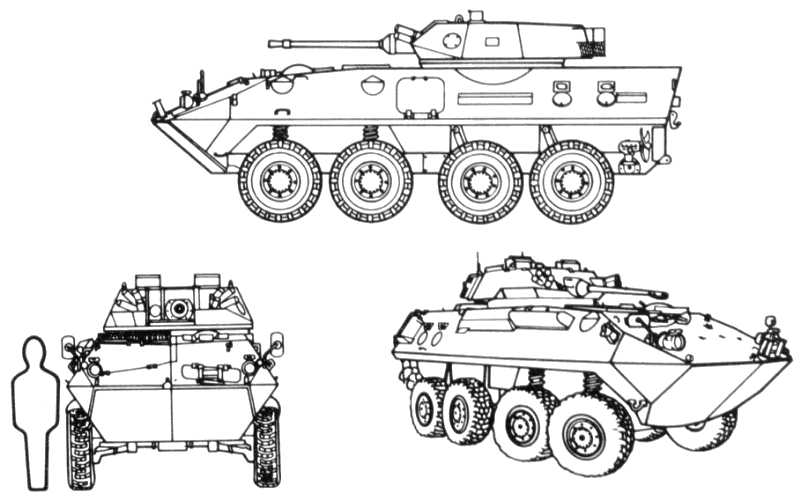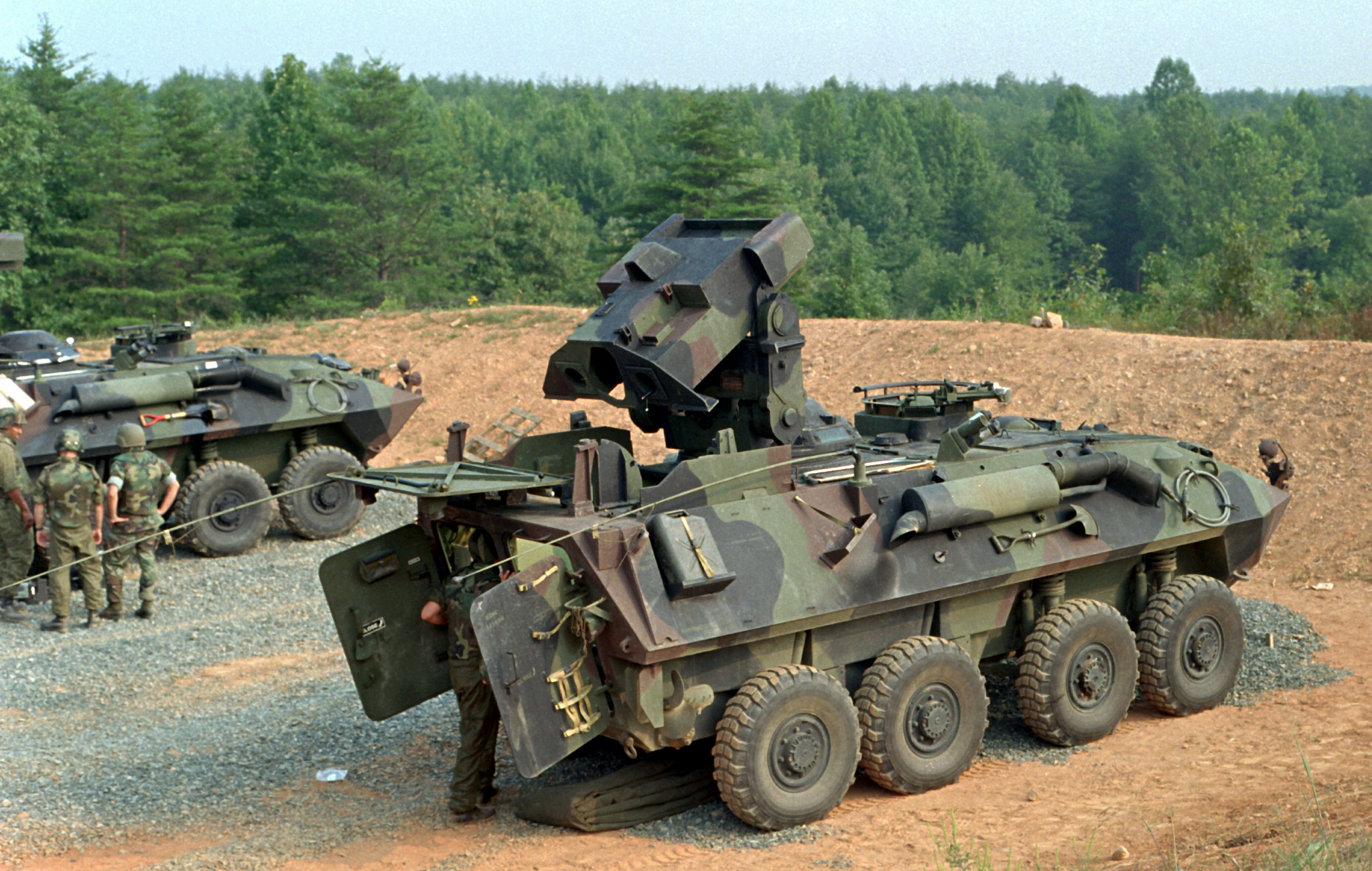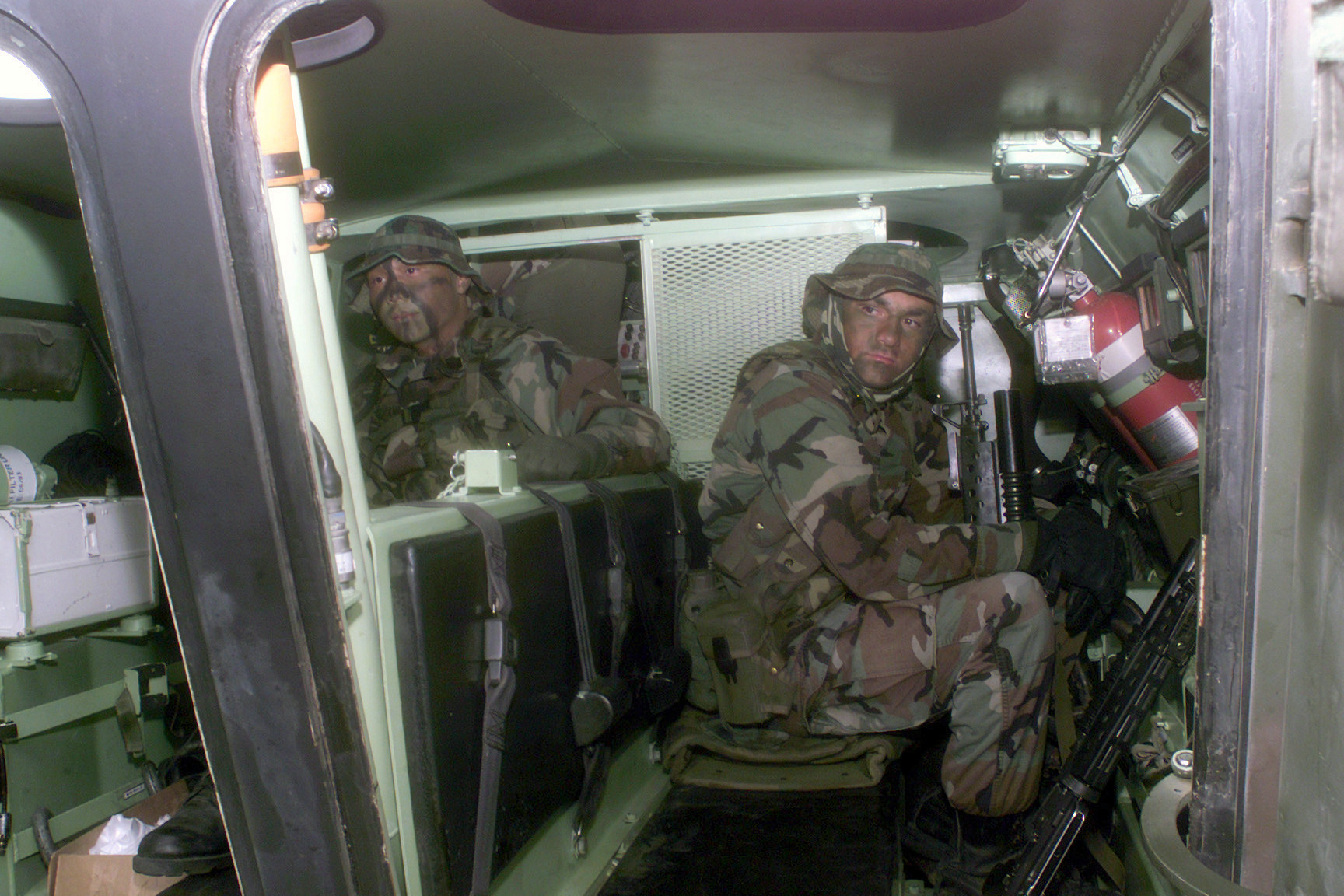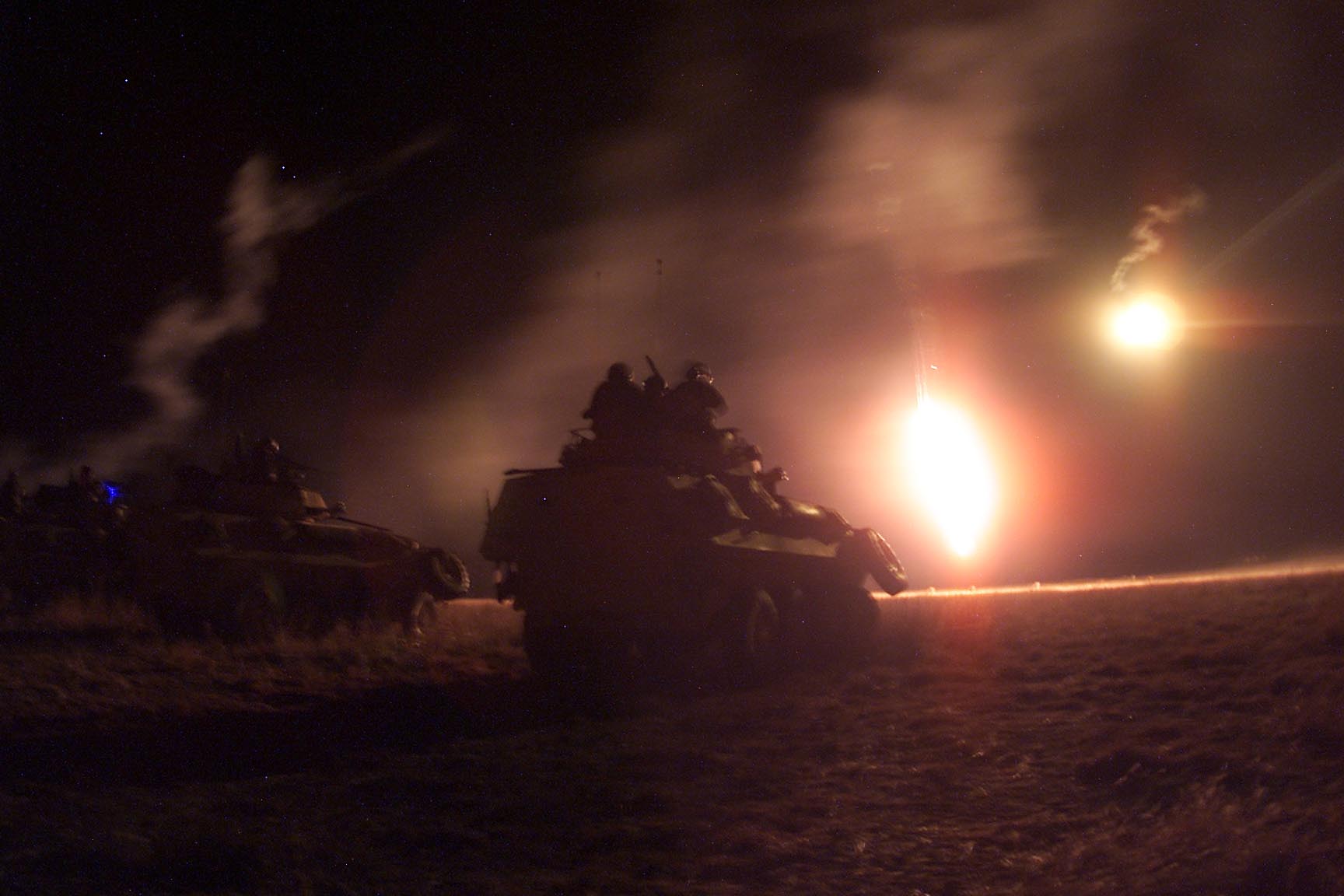USMC Marine Corps LAV Light Armored Vehicle History
During the late 1970s the U.S. Marine Corps, under the leadership of then Commandant General Al Gray, used a special allocation from Congress for rapid deployment forces to purchase and field the Light Armored Vehicle (LAV), built by GM Defense Systems in Canada. In 1980, at the Marine Corps Air Ground Combat Center, Twentynine Palms, CA a test project began with several Light Armored Vehicles (Grizzlies) on loan from the Canadian Forces.
Based on impressive performance of the LAV at Twentynine Palms, the Marine Corps identified a requirement for enhancing the mobility and firepower of rapid deployment units, replacing the slower, tracked
M-113 Armored Personnel Carriers and other platforms. On 27 September 1982, a production contract was awarded for six LAV configurations LAV-25, LAV-R, LAV-LOG, LAV-M, LAV-AT, and LAV-C2.
The first Light Armored Vehicle unit, the Second LAV Battalion at Camp Lejuene, NC, was activated during May 1985 and began receiving LAVs in July 1985. Shortly thereafter, First LAV Battalion was created at Camp Pendleton, CA and Third LAV Battalion at Twentynine Palms, CA. To better reflect the mission of the LAV units, in 1988 unit names were changed to Light Armored Infantry Battalions.
LAVs were first involved in combat operations during 1989, during Operation Just Cause in Panama.
LAV Configurations
There are more than 700 LAVs in the Marine Corps 2007 inventory, fielded in one of eight different model variants or configurations:
- LAV-25, base model, armed with an M242 25mm chain gun
- LAV-AT, Antitank, equipped with TOW missile system
- LAV-C2, Command and Control (C2), outfitted with a robust communications suite
- LAV-LOG, Logistics vehicle, providing cargo and maintenance capacity
- LAV-M, Mortar 81mm Mortar carrier
- LAV-R, Recovery vehicle
- LAV-MEWSS, Mobile Electronic Warfare Support System
- LAV-EFSS, Expeditionary Fire Support System replaces the LAV-M with a 120mm mortar
The LAV-25A1 is a USMC light armored amphibious vehicle equipped with a stabilized 25mm cannon and coaxially mounted 7.62mm machine gun. The LAV-ATA1 is a similar vehicle but equipped with the TOW 2 anti-tank missile system.
Older variants include the LAV-AD, air defense variant, no longer fielded.
LAVs are equipped with twin aft propellers and rudders, and can make 6.5 mph in calm waters of rivers or for fording streams. It cannot handle surf or ocean-going.
The LAV-25 has a two-man turret, which provides ballistic protection equivalent to the base chassis. The vehicle provides the vehicle commander and gunner with full 360° visibility in the closed hatch mode via periscopes. The primary armament is the electrically powered M242 25mm automatic chain gun, the same as on the
M2/M3 Bradley Fighting Vehicle, which can fire single shot, 100 or 200 rounds per minute. The LAV-25 has a crew of three and carries six Marines inside.
LAV-A2 Program
To reflect the improved significant survivability and capability enhancements occurring today, the LAV is being renamed as the LAV-A2. The LAV-A2 project involved developing and installing an internal and external ballistic protection upgrade package for the Light Armored Vehicles, an automatic fire suppression system for the interior of the vehicle and a Generation II suspension upgrade to support the added weight of the new armor. The suspension upgrade includes new struts/steering knuckles, torsion bars, shocks and mounts and drive shaft. The three-kit armor system provides the LAV with additional survivability against improvised explosive devices (IED) and direct-fire kinetic energy weapons.
LAV-A2 includes the AN/PAS-13 Improved Thermal Sight System (ITSS) developed by Raytheon of McKinney, TX, scheduled for fielding by the end of 2007. The ITSS provides the gunner and commander with thermal images, an eye-safe laser range finder, a fire-control solution and far-target location target grid information.
LAV-AD, air defense variant (discontinued).
USMC 1st Light Armored Reconnaissance Battalion, 15th Marine Expeditionary Unit LAV-25, Udairi Training Range, northern Kuwait, 8 April 2000.
Staff Sgt. Russell A. Strack, Company B, 4th Light Armored Reconnaissance Battalion, Fort Detrick, MD, in LAV-25 commander's seat, during an exhibit on the National Mall in Washington, DC, 10 May 2001.
Maj. Gen. Willie J. Williams (top, right), Commanding General, Marine Corps Logistics Command, and Michael T. Madden, LogCom Executive Deputy, with the first completed LAV-A2, Building 3500, USMC Logistics Base Maintenance Center Albany, GA, October 2006. Standing next to the LAV is Tim Minatee, LAV line work leader, and Heidi Roe, LAV project lead. This particular LAV-A2 is the first completed model of more than 80 that are undergoing extra armor protection at the Albany facility for use by U.S. Marines fighting in Iraq.
Two LAV reconnaissance vehicles assigned to Battalion Landing Team, 24th Marine Expeditionary Unit, during a Central Command training operation, 2007.
Marines from 3rd Light Armored Reconnaissance Battalion prepare to fire an
M252 81 mm mortar from a LAV-M during Combined Arms Exercise, Twentynine Palms, CA, 18 October 2000.
LAV-R at Task Force Breach Alpha's position in northern Saudi Arabia, Operation Desert Storm, February 1991.
 Canada
Canada




















